Pressure treated wood, or pressure treated pine (PTP) is the #1 choice in America for outdoor living structures, such as decks, porches, and pergolas. A variety of factors account for the perennial popularity of pressure-treated wood. The two top reasons are the cost, as it is inexpensive to build with compared with other materials. Secondly, is that pressure-treated wood is easy to work with. At Archadeck of the Piedmont Triad, the substructures for all of our decks and porches and other outdoor structures are built from pressure treated pine because it is strong and dependable, even on the projects where the floors and railings are built with something else. Using pressure-treated wood on the areas above the substructure (the area you see), has an added benefit of a classic look that many people enjoy: natural wood grain. Nothing, except for real wood, looks like authentic wood. For this reason alone, for some clients, there is no other choice.
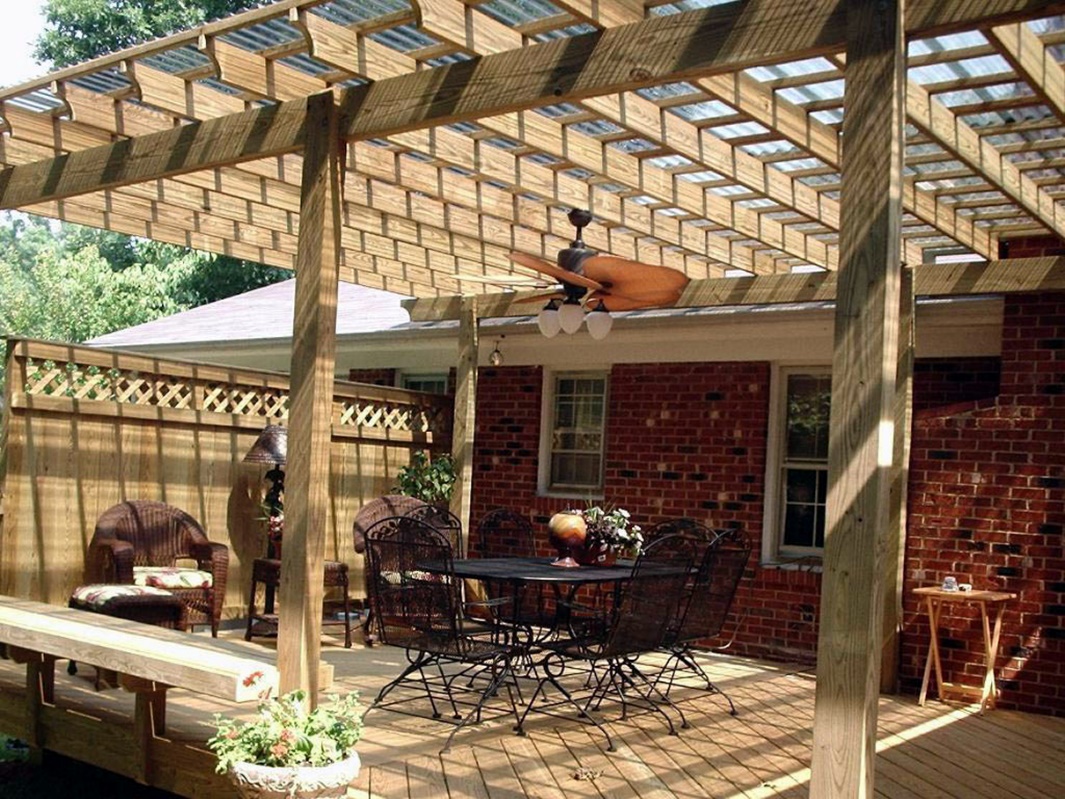
Should you use pressure-treated wood for a pergola and deck?
What are the cons of pressure treated wood for a pergola, pavilion, or deck project?
We have established that pressure-treated pine is revered for its dependability, ease to work with and beauty. What are the drawbacks of building a pergola, pavilion, or deck with pressure treated wood? The main problem is that it’s very reactive to the sun. If you are not diligent about the care and maintenance of pressure-treated wood, it will change color, crack, warp, and cup. Depending on the weather and environment where you live, it may also be susceptible to mold, rot, and insect damage. PTP decks and porches can have very long, beautiful, and useful lives if you treat them right. No product will last forever. Since pressure treated pine is natural, know that all-natural wood, is prone to decay and rot over time and exposure to the elements. However, maintaining your structure will properly ensure a long life for your pergola, pavilion, or deck.
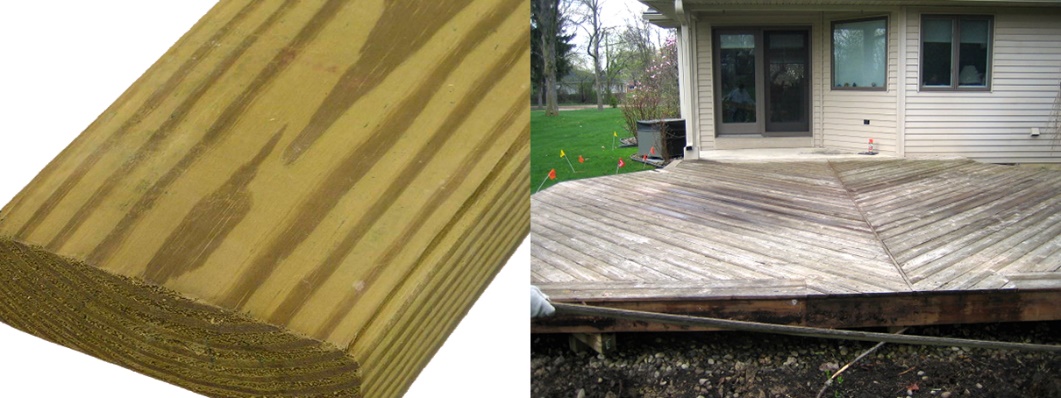
Pressure treated wood requires care and maintenance.
Pressure treated wood care is all about preventing damage.
The first rule in pressure treated wood deck care is to wet it down regularly. If your deck spends many hours each day in direct sunlight, you may want to hose it down several times a week. If you have an irrigation system in your yard, this may be as easy as adding to your timer’s cycle. You want to get in the habit of doing this before it cracks. You can’t reverse cracking once it starts.
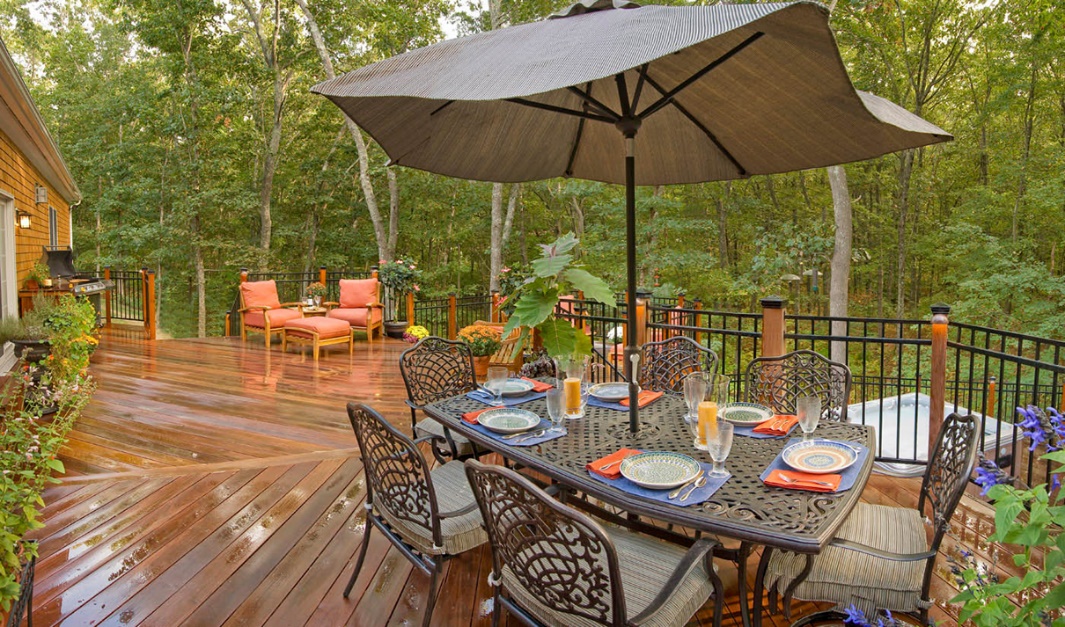
Pressure-treated wood decks require regular wetting down to prevent cracking.
UV protection is recommended for pressure treated wood decks and pergolas.
Stripping, cleaning, and staining with a UV protective exterior wood product will also go a long way in protecting your investment. For a deck with average sun exposure, once a year should be an adequate frequency to go through this process. You can choose to apply a transparent sealer, a semi-transparent or opaque stain and even exterior paint. My favorite of these is semi-transparent stain. It provides good protection with a slight color enhancement. The opaque stains offer the same protection, but wear and tear from normal foot traffic will be more noticeable.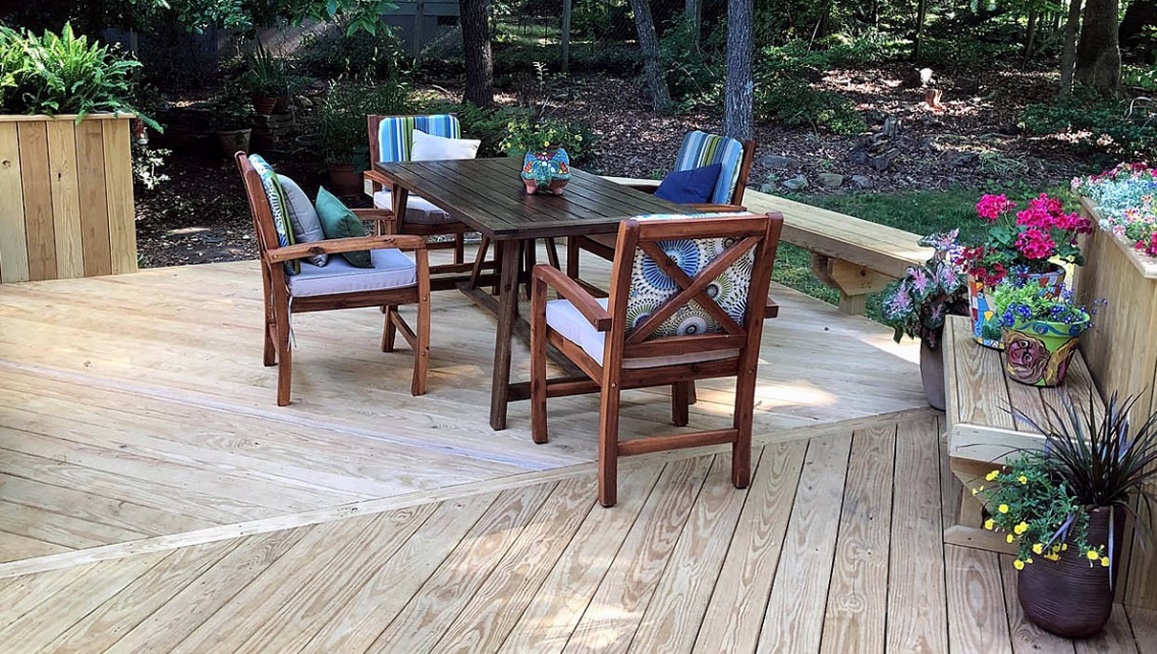
Pressure-treated wood deck with benches and planter boxes.
Transparent sealers have no stain in them and are the easiest to “strip” when the time comes. If you don’t mind the inevitable gray cast your deck will acquire as a result of those powerful UV rays, this may be a good choice for you. I listed painting as an option, but it really is a poor choice for horizontal surfaces, including decking, bench seats, and rail caps. It will wear and it will be very noticeable. If you want to use paint, I recommend reserving it for vertical components like rail posts and pickets.
Trusted brands in pressure treated wood staining products.
When it comes to specific product recommendations, we have heard positive feedback on the deck staining products from Cabot Stain and Sherwin-Williams. Neither is inexpensive, but both have very solid reputations. In this case, more is more! Both can be applied by a homeowner with a free weekend, or you can hire a local painter. Think of it like getting your teeth cleaned. You know you need to do it, so just do it.
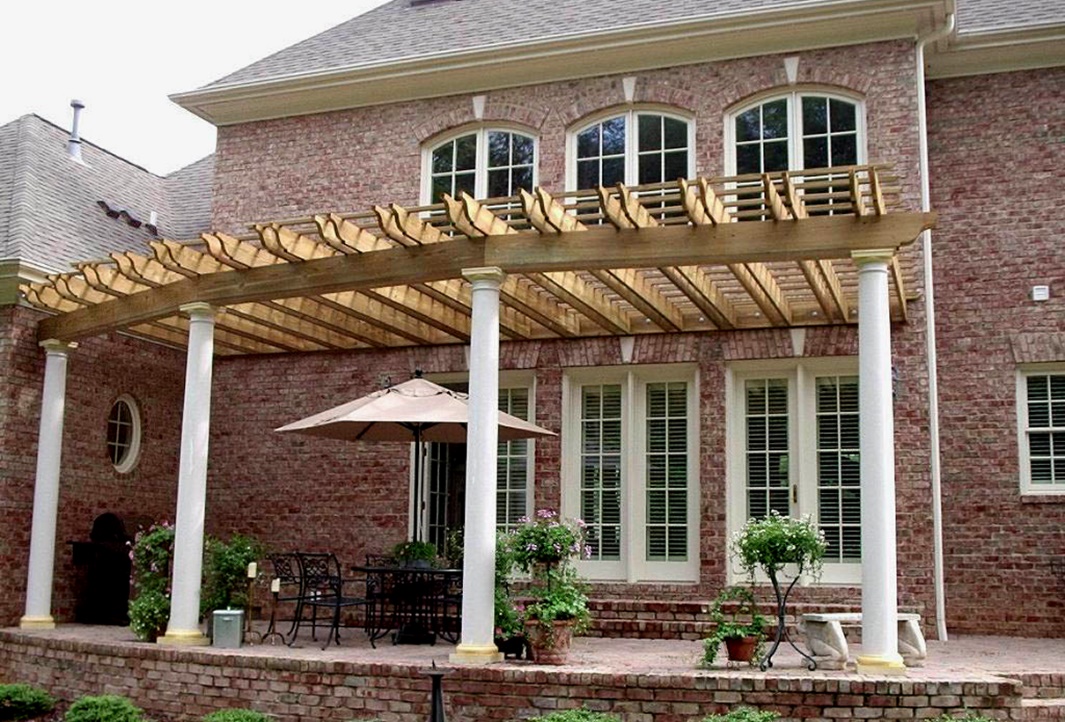
Pressure treated pergola roof with fiberglass columns.
But what if you really don’t want to do it? If you are not up to the pressure-treated pine challenge, Archadeck can recommend many other options for decking materials that require less upkeep. If you have more questions about PTP vs. composites or other products for your deck or porch product, give us a call. We’ll be happy to help you make the choice that’s right for you.
High-grade pressure-treated wood is highly recommended.
If you are up to the challenge of caring for pressure treated wood, one last aspect is ensuring your builder uses premium or select wood in your project. These boards have fewer knots and a straighter grain. And, since many of the higher-grade choices are kiln-dried both before and after pressure treatment, they have less tendency to warp. Here at Archadeck of the Piedmont Triad we always use premium pressure treated pine in our custom deck designs. Choosing to go with a less reputable builder may result in the use of inexpensive treated wood that is often full of moisture and will shrink unevenly and twist when it dries.
If you are considering adding a pressure-treated pergola or deck to your home, Archadeck of the Piedmont Triad would like to be your building partner. Give us a call for a free consultation at (336) 568-8230, drop us an email or fill out a contact form on this website. We look forward to your call.